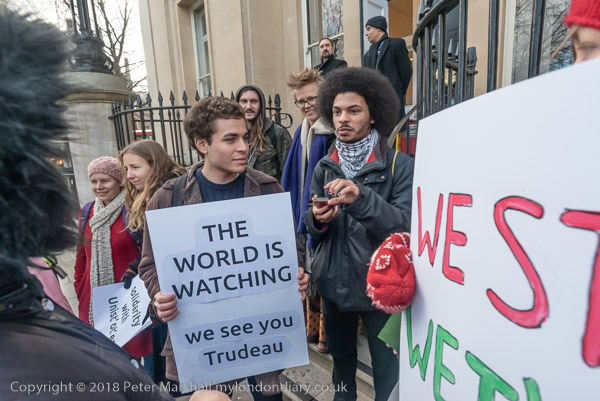
When I grew up our education system still proudly proclaimed the positive nature of the British Empire, even though it was more or less in its death throes, being replaced in part by the ‘Commonwealth’ (until 1949, the ‘British Commonwealth’). But we were never told about any of its less positive aspects, including often the total ignoring of the rights and laws of the people of the lands we conquered. Many of course were killed, either deliberately or by the introduction of diseases against which they had no natural resistance.
The area now in Canada around Hudson’s Bay, known as Rupert’s Land, was granted to the Hudson Bay Company by Royal Charter in 1670. The French set up ‘New France’ covering much of what is now USA, including Canada, then the districts of Québec, Trois-Rivières and Montréal. At the peace treaty following the global Seven Years’ War in 1763, Canada became a British colony. In 1821 the Hudson’s Bay Company (HBC) took over the North-Western Territory, putting them in charge of most of the rest of modern Canada. The country came together when the UK Parliament in its Rupert’s Land Act 1868 approved the sale of all of the territory held or claimed to be held by the HBC to Canada.
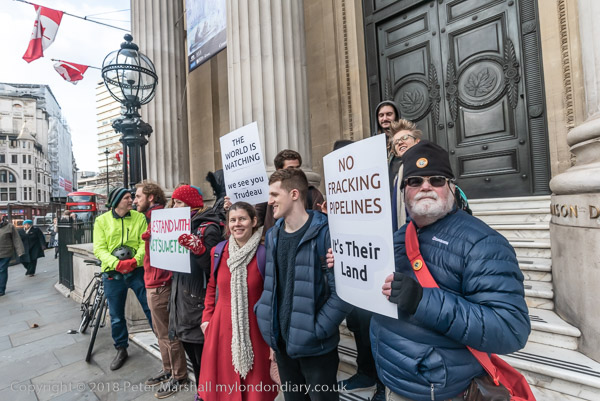
Back in 1670, the charter had made it clear that so far as land rights were concerned it only recognised the land rights of “our Subjects, or … Subjects of any other Christian Prince or State.” I’m not entirely sure if the Christian in that document always included Catholics, but certainly the indigenous peoples of the area we annexed were considered to have no rights at all, and the same continued to be true in 1868.
The First Nations were clearly in possession of the land when the British and others arrived in the 17th century but they had no concept of ownership of land and any treaties they later made were for them not about ownership of land but of sharing its use. It was only in 1973 that a Canadian court acknowledged “that the aboriginal title, otherwise known as the Indian title, to their ancient tribal territory has never been lawfully extinguished“.
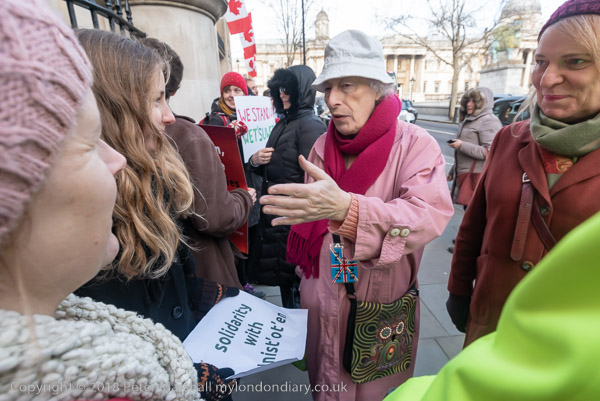
A passing artist, Margaret Dawn Pepper and her friend stop to show support
The Wet’suwet’en of British Columbia have never signed treaties with Canada or given up rights and title to their ancestral lands and say Canada is violating Anuk Nu’at’en (Wet’suwet’en law) as well as Canada’s own colonial laws in building the Coastal GasLink pipeline across their land to carry fracked natural gas to a processing plant. 14 of them were arrested at gunpoint on Jan 7th for obstructing the building of the pipeline, after an injunction had been obtained ordering them not to block it.
The day after this protest in London took place the Wet’suwet’en leaders came to an agreement with the RCMP to allow limited work on the pipeline to go ahead, so long as they were allowed access to their healing lodge and the back country to continue trapping.
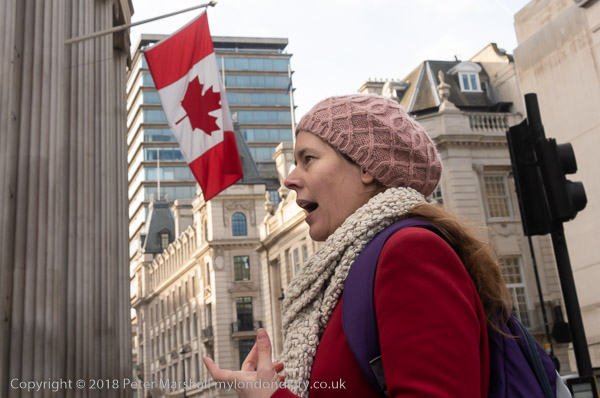
Claire James, Campaigns Coordinator of Campaign against Climate Change
The Wet’suwet’en remain opposed to the pipeline project which they say endangers their water supplies and traditional trapping areas, and there have been continuing complaints about the pipeline workers bulldozing traps, endangering the health centre and restricting access to areas of their land.
The Wet’suwet’en have been backed locally, nationally and internationally by groups concerned with the protection of indigenous rights and by enviromentalists, worried at the huge amount of carbon dioxide that will be produced by gas exported through the pipeline and the global warming this will produce. We should be cutting our use of fossil fuels, not promoting new sources such as this.
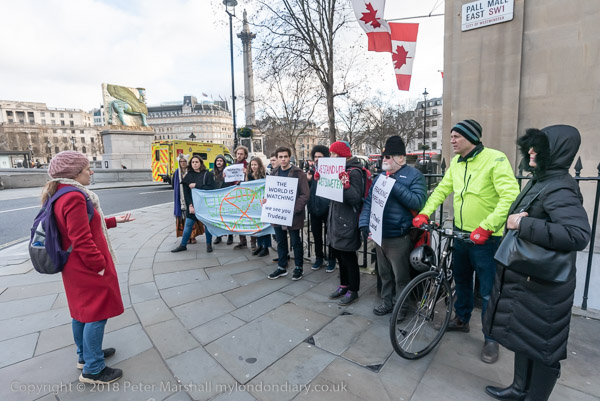
The protest started with just a hundful of protesters but was over twice as large by the time I left. They protested at three different entrances to Canada House.
More pictures at Solidarity with Wet’suwet’en Pipeline Protesters
______________________________________________________
There are no adverts on this site and it receives no sponsorship, and I like to keep it that way. But it does take a considerable amount of my time and thought, and if you enjoy reading it, a small donation – perhaps the cost of a beer – would be appreciated.
My London Diary : London Photos : Hull : River Lea/Lee Valley : London’s Industrial Heritage
All photographs on this and my other sites, unless otherwise stated, are taken by and copyright of Peter Marshall, and are available for reproduction or can be bought as prints.
To order prints or reproduce images
________________________________________________________